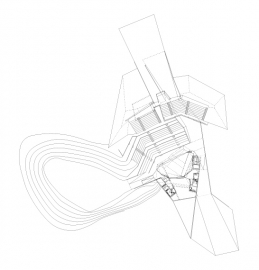Cloud Tower
In 2005 the next ENTERprise won a competition that called for a concept to revive the historical landscape garden of Grafenegg Castle and for the design of a pavilion that should serve both as a landmark and a concert venue during festival season in summer. In its current incarnation the park is 250 years old. The mature tree plantings and the variety of styles left by successive generations, account for much of its appeal.
The aim was to design a Gestalt unconstrained by functional needs and in this related to the typology of the pavilion that would reveal itself as a stage once a performance started. How can such a structure retain its aesthetic autonomy and at the same time become an instrument for directing sound for an audience of 1700 people?
The basic rule of acoustics for open-air stages, what you see is what you hear serves as a cue to explore affinities between perspective and acoustic space. Placed in an existing topographic depression, the Große Senke , further deepened by modeling the terrain, the pavilion inserts itself into the field of sightlines and vistas typical of a landscape garden, re-contextualizing the existing relational field of the park. Through its topographical configuration, it reinterprets formal elements of the landscape garden the play with perspective and visual relations, with contraction and expansion, with enclosure and opening.
The Schneise (loosely translated: an incision in the landscape) creates a vista linking the riding school to the Black Gate, and serves as an entrance to and a passage through the auditorium area.
Coming from the gate, the visitor is enticed to proceed by the silhouette of the cloud tower , visible behind the artificial mound. Immersing himself into the incision, he tunnels through the hill and after passing this deep narrow enters the wide arena of the auditorium, the cloud tower of the stage roof suspended above it.
The pavilion itself is generated from topographical formations the incision, the incline, the hill and the architectonic folding of the roof, at once merging with the landscape and raising from it. These two principles correspond to the use of monolithic fair-face concrete for the stage and auditorium and of folded steel for the roof.
The materials used in the stage area are highly reflective and help build the sound energy necessary for the size of the auditorium.
The stage roof is designed as an autonomous, sculptured object. Suspended above the landscape on a level with the tree canopies it is placed among the groups of trees as if it were one more of them. The shiny metal surface on the outside reflects the sky and the trees, turning into a Cloud Tower.

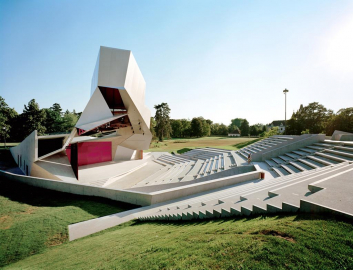
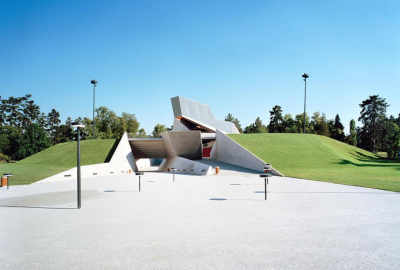
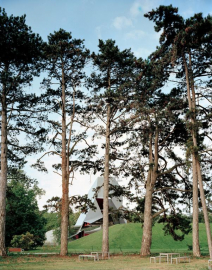
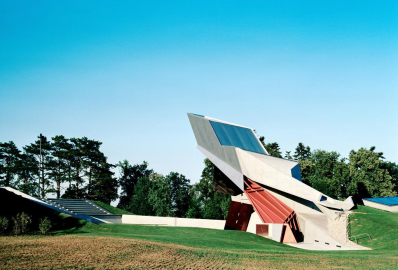

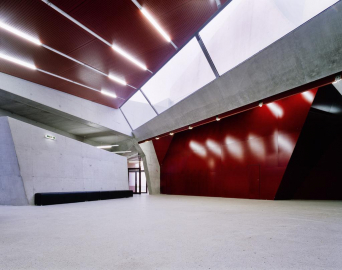
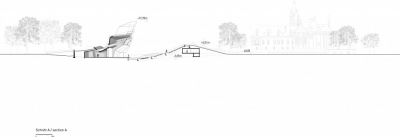
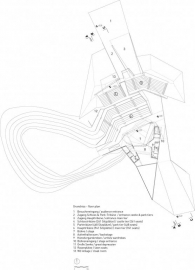
.jpg)
.jpg)
.jpg)
.jpg)
